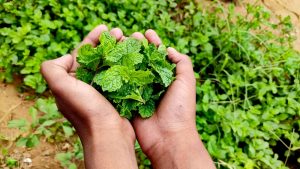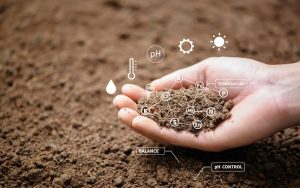
Egypt, with its rich agricultural history and diverse climate, has become a fertile ground for the cultivation of various herbs and spices. Among these, spearmint (Mentha spicata) stands out for its aromatic properties and versatile applications. This essay delves into the cultivation of spearmint in Egypt, exploring its significance, cultivation practices, and economic impact on the agricultural landscape.
Historical Significance:
The cultivation of spearmint in Egypt dates back centuries, with historical records indicating its use in ancient Egyptian medicine and rituals. The aromatic herb was valued for its refreshing scent, culinary uses, and medicinal properties. Today, spearmint continues to be a staple in Egyptian agriculture, contributing to both domestic consumption and international trade.
Climatic Conditions and Soil Requirements:
Spearmint is well-suited to Egypt’s diverse climate, which ranges from the Mediterranean coast to the arid desert regions. The plant thrives in well-drained soil with a slightly acidic to neutral pH. Egypt’s delta and valley regions provide optimal conditions for spearmint cultivation, offering fertile soil and sufficient sunlight.

Cultivation Practices:
· Propagation: Spearmint is commonly propagated through rhizomes or cuttings. Farmers carefully select disease-free and vigorous planting material to ensure a healthy start.
· Land Preparation: Before planting, the land is prepared by ploughing and levelling to ensure proper drainage and aeration. Organic matter may be incorporated to enhance soil fertility.
· Planting: Planting typically occurs in the early spring or fall. Rows are spaced adequately to facilitate irrigation and harvesting.
· Irrigation: Spearmint requires consistent moisture, and irrigation methods vary based on the region. Drip irrigation and furrow irrigation are commonly employed to meet the plant’s water needs.
· Fertilization: Balanced fertilizers are applied during the growing season to support the plant’s nutrient requirements. Organic fertilizers may also be used to promote soil health.
· Weed Control: Weeding is crucial to prevent competition for nutrients and moisture. Manual or mechanical methods, as well as mulching, are employed to manage weeds.
Harvesting and Processing:
Spearmint is typically harvested when the essential oil content is at its peak, which often occurs just before flowering. Harvesting is usually done by hand to ensure the delicate leaves remain intact. After harvesting, the leaves undergo a distillation process to extract the essential oil, which is a valuable product with applications in the food, cosmetic, and pharmaceutical industries.
Conclusion:
Spearmint cultivation in Egypt embodies a harmonious blend of tradition and modern agricultural practices. The herb’s historical significance, coupled with its adaptability to Egypt’s climate, makes it a valuable crop for farmers and a key player in the nation’s agricultural landscape. As Egypt continues to embrace sustainable farming practices, the cultivation of aromatic herbs like spearmint serves as a fragrant reminder of the country’s agricultural resilience and cultural heritage.
